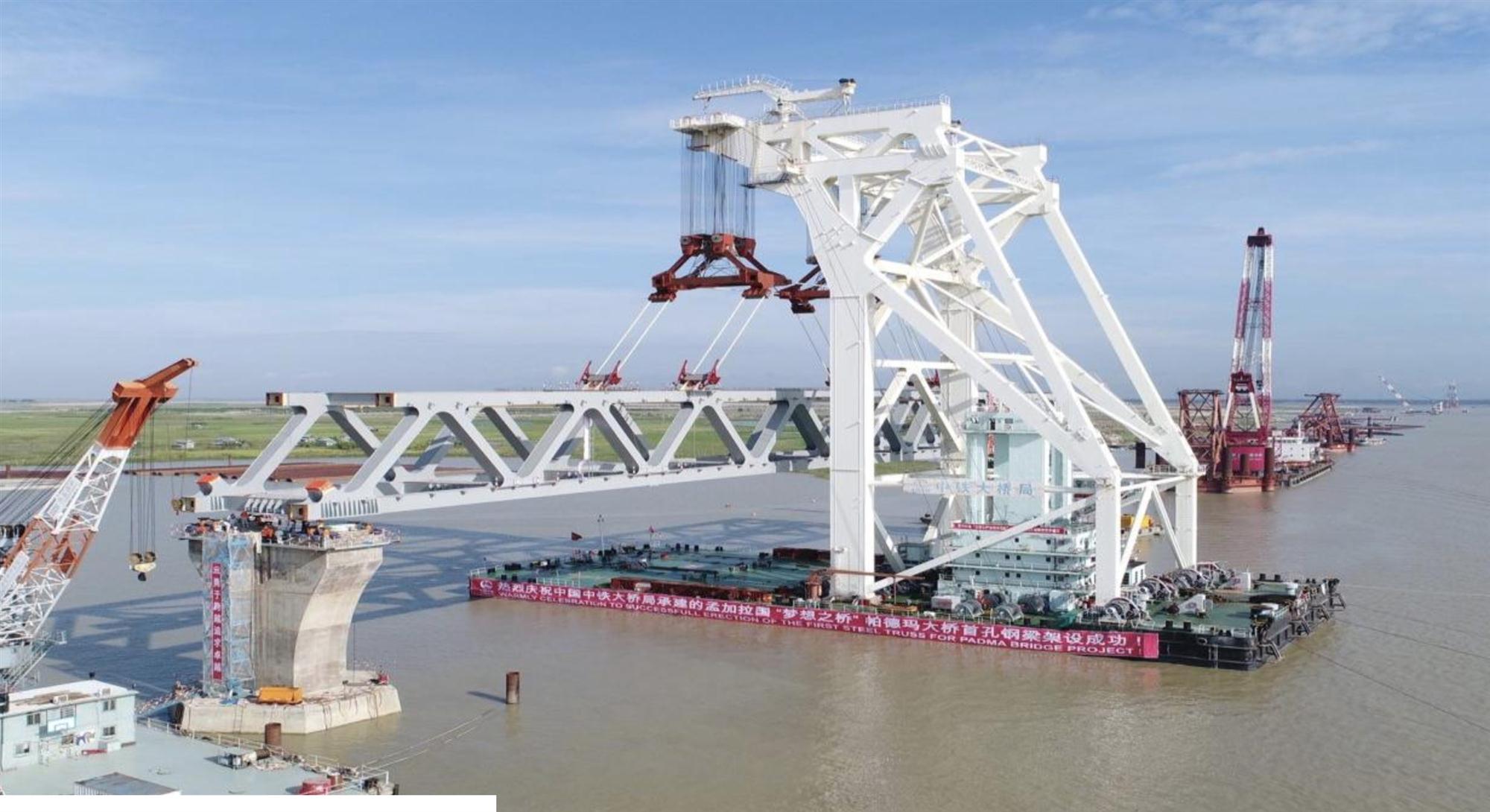Bangladesh is making incremental progress on its infrastructure, but stubborn problems endure.
As exports rebound, the basic lack of connectivity becomes more acute, and while various initiatives are underway from both the government and international organizations, the general feeling across the industry is it will be years before any improvements show.
“It takes time,” Muammar Ahmad, finance director for the Bangladesh Freight Forwarders Association (BAFFA), told Asia Cargo News in an interview in Dhaka. “The government has taken the initiative. It will take years before we are expecting it to be felt.”
Ahmad pointed to ports as an area where things are happening – although, it must be said, not with great speed.
Chittagong, effectively Bangladesh’s only real port, is seeing some enhancement with a second terminal, the Bay Container Terminal, being planned to be built near the highway. There are plans for other terminals but the government is fast-tracking the BCT plan which might see a terminal come on line in 2021.
It has also moved to shore-up Chittagong.
Mongla, which has a draft issue, requires continuous dredging but has been designated by the government as the port for car imports and jute exports, explained Ahmad. This saves more of Chittagong’s capacity for the all-important and booming garment trade.
There is also the strong possibility of a totally new facility. In a sign of Bangladesh’s openness and its willing-to-do mentality, the “government has prioritized development and operation of Payra Port and has taken up development of Terminal 1 under a public-private partnership (PPP) model,” as the country’s PPP Authority website put it.
The terminal is to have a 2,000-metre jetty and a draft of 10 metres, the site added.Expressions of interest from consultants were invited late last year but no announcements have been made since then, suggesting a slow but steady approach.
“They are expanding the port capacity, definitely,” said Ahmad, adding of Payra: “[In] 15 to 20 years, it is going to be quite a viable facility.”
Upstream of the ports is the problem of on-land connectivity. Or, in a country like Bangladesh, which is famed for its rivers – it has some 700 plus of them – over-water connectivity might be a better way to put it. And some of these rivers bring their own complications.

The best example of both the efforts being made and of the problems involved is the Padma Multipurpose Bridge, which will do what has not yet been done, which is to provide a direct connection between Dhaka, the capital, and the south of the country. It will be a significant addition to the country’s hardware – if the Padma River will allow.
The Padma is best described as a difficult river, and during the monsoon the water flow can be as fast as five metres a second, which poses a challenge to building anything, much less a major piece of civil engineering.
An upper deck will carry a four-lane road, while a lower deck will have a single track (but dual gauge) railway line, which should provide significant road and rail boosts.
The bridge is being built with the plan being for it to open next year, with the government thinking of launching a Dhaka-Chittagong bullet train, according to BAFFA’s Ahmad. That might be a bit optimistic, though; as of the end of March 2018, the bridge and associated work was only 53% finished, according to the website padmabridge.gov.bd. That may be too tight for the scheduled November 2018 completion.
Where government planning is much more grounded, and is indeed already going ahead, is for an inland container depot in Gazipur, where a lot of the country’s garment manufacturers are already based. (This will have its own train line to Dhaka, meaning goods from there to Chittagong “will be moving pretty fast,” Ahmad said.)
“It will add a lot of value. It’s just a matter of time,” said Ahmad, who reported that land acquisition for the depot has already begun.
Interestingly, this comes on top of two other developments, one of which shows the progress which has been made and the other showing how much more there still is to do.
Times have come down from 24 hours to 16 hours for freight moving from Dhaka to Chittagong. This is poor performance for a distance of just 260 kilometres, but does represent an improvement on itself, as Ahmad points out.
Likely to help further improve transit times, the Asian Development Bank (ADB) has approved loans totaling US$360 million for Bangladesh Railways to buy modern rolling stock, including 40 broad gauge locomotives and 1,000 freight wagons for use on major lines of the rail network, the ADB said in a statement.
Under its Seventh Five-Year Plan for fiscal years 2016-2020, the government has placed special emphasis on railway development, aiming to increase freight’s market share to 15% by 2020.
“Inadequate investment in railway infrastructure and rolling stock over an extended period has resulted in unreliable freight operations,” the ADB added. “Most rolling stock is more than 30 years old, and much is past the end of its economic life,” the statement explained.
Against this is one sobering thought, which outlines the scale of other problems. Bangladesh only recently, on April 3, sent its first container train across its border with neighbour India. The two countries operate different gauges, which complicates matters but helps explain why connectivity requires international help.
The seven-member Bay of Bengal Initiative for Multi-Sectoral Technical and Economic Cooperation (BIMSTEC) has just had the first meeting of a working group to negotiate the Draft Text of the Motor Vehicles Agreement for the Regulation of Passenger and Cargo Vehicular Traffic between and among BIMSTEC member countries. This follows a meeting last year of BIMSTEC member states to discuss promoting coastal shipping in the region. Both seem likely to have long time frames.
By Michael Mackey
Southeast Asia Correspondent | Dhaka



